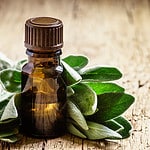Understanding Knee Pain
Knee pain is a common nuisance. It can be due to overuse or injury. This can cause discomfort and make movement hard. Walking, running and other activities can also be impacted.
To manage this pain, understand the root cause. In this article, we will discuss knee pain and how to get some relief.
Identify the cause of your knee pain
It’s key to identify the cause of knee pain. Pain can be acute or chronic. Acute pain is intense and from an injury. Chronic pain is ongoing. Knee pain can be from many conditions, like osteoarthritis, rheumatoid arthritis, meniscus tears, fractures, and ligament sprains.
Lifestyle can cause knee pain too. Running, jumping, and being overweight can put stress on the joint. High impact sports can cause discomfort. A physical therapist or doctor can evaluate your knee.
To manage knee pain, reduce activity during peak discomfort. Use ice or warm compresses after exercise. Consult a physical therapist for low-impact exercises that strengthen supporting muscles without stressing the joint:
- Strengthening exercises
- Stretching exercises
- Balance exercises
- Aerobic exercises
Understand the types of knee pain
Knee pain has two types: acute and chronic. Acute pain often happens when an injury or trauma recently occurs to the knee or leg, like a tear in the ligaments or cartilage, a dislocation of the joint bones, a bruise, or some other inflammation. Pain from these injuries is mainly located in the area around the injured knee.
On the other hand, chronic knee pain is caused by wear-and-tear over time on the tissues that make up your knee joint, such as ligaments and cartilage (meniscus). Usually, this type of pain is a “dull” ache in one or more spots around the joint. Also, chronic conditions like rheumatoid arthritis can cause pain in the knees and other body parts.
Self-Care Strategies
Self-care is important for dealing with knee pain. Resting and looking after your body can reduce inflammation, increase muscle flexibility, and improve overall wellbeing. Finding the right balance of rest and activity is important.
Here, we will look at some self-care tactics to find peace and comfort:
Use heat and cold therapy
Heat and cold therapy can ease biomechanical and micro-trauma injuries. Heating pads, ice packs, warming salves, and cold compresses can reduce inflammation and give relief. Heat relaxes muscles, while cold constricts them and brings calmness.
Heat therapy is great post-exercising to reduce soreness and increase circulation. Cold therapy is great for sudden pain episodes like sprains or strains. Ice can “prep” the muscle joint area before activities like walking or running.
But, different injuries respond differently to heat or cold. Ask a professional if you’re not sure which type to use. Also, limit application to 20 minutes at a time – prolonged exposure can cause damage.
Try gentle stretches and exercises
Gentle stretches and exercises are an oft forgotten form of self-care. Spending time bending, stretching and flexing can help you feel more focused. Begin with gentle stretching and end up feeling energized! Low-impact activities like yoga, calisthenics and stretching can improve your day-to-day wellbeing.
Some stretches you can try:
- Hamstring stretches
- Shoulder rolls and circles
- Neck rolls and shoulder shrugs
- Quadriceps stretches
- Backbends and cobras poses
Consider adding light cardio activities like walking and jogging too. Swimming laps in a pool is a great low-impact and highly effective way to work out while taking care of yourself!
Use a foam roller
Have knee pain been getting in the way of your life? Foam rolling may be the answer! It’s a type of myofascial release that applies pressure to tense muscles.
Foam rollers come in different densities and widths, depending on the area and desired pressure. To do foam rolling, sit or stand with the foam roller between your body and the ground. Roll up and down the muscle slowly. This releases tightness in the muscle, allowing it to relax afterwards.
When foam rolling around the knees, be careful not to use too much pressure. Light to moderate pressure is best. Regular use of a foam roller can give relief. It warms up stiff muscles before using them and helps unkink cramped muscles after. This can lead to increased range of motion and help towards achieving recovery goals.
Rest and Relaxation
Dealing with knee pain can be tough. Fortunately, there are activities and tools available to help you get relief. This article covers how to relax and find comfort during recovery. We’ll explore various relaxation techniques and provide tips for making them part of your daily life.
Get plenty of sleep
Sleep is a must for recovering from hard work. It depends on your body, the amount of movement, and if your sore areas can rest too much. Get 7-9 hours of sleep, even if you don’t have knee pain.
Creating a sleep-friendly environment is great for knee pain. Make sure the bed is firm but cushioned. Sleep on your back or side. Don’t lay on your stomach. Put a pillow between your knees while lying on either side. This helps with body alignment and relieves knee pain.
Practice relaxation techniques
Chronic pain can easily draw one towards obsessive thinking and anxieties. Relaxation techniques can help reduce stress and keep a relaxed state of mind. Progressive muscle relaxation and deep breathing can be highly beneficial for calming the body and reducing pain.
With progressive muscle relaxation, tense muscles are tensed one at a time before relaxing them. Deep breathing is also a helpful strategy where slow, deep breaths are taken into the nose and exhaled slowly through the mouth. This can provide an immediate sense of relaxation.
Mental imagery can also be used to manage chronic pain. Positive images can distract from physical pain and make one feel calmer.
Developing a daily routine with physical activities such as yoga stretching or dance therapy can further facilitate ease when dealing with chronic knee and leg pain. Mental breaks should also be taken; moments throughout the day can be used to cuddle with someone or enjoy music while engaging in mindful meditation.
Find a comfortable sleeping position
Getting quality rest can be linked to finding a comfy sleeping position. Everyone’s ideal posture varies, so experimenting is key. Common positions are lying on your back, side, or stomach.
- When on your back, wear a support pillow under your neck and keep legs bent slightly.
- When sleeping on your side, tuck a pillow between legs and bend both knees and hips.
- If you’re lying on your stomach, put a pillow at chest level to avoid neck twisting.
Before bed, relax your muscles from feet to head, until all are sufficiently relaxed for sleep. Comfort is crucial for healthy and restful sleep.
Physical Therapy
Physical Therapy: a key to unlock your knee’s mobility and strength! Exercises and hands-on care from a PT can reduce pain and heighten range of motion. Treatments like stretching, strengthening, massage and ultrasound therapy are at their disposal.
Let’s discover how physical therapy helps with knee pain!
See a doctor or physical therapist
If you suffer from knee pain, it’s important to consult a doctor or physical therapist quickly. They can assess your condition and decide the best treatment. Physical therapy, medication and exercise can reduce discomfort and help you move properly.
Your doctor or physical therapist will make a personalized plan that includes stretches and strength training to boost flexibility and strength. Heat or ice packs may be used to reduce swelling. Your doctor or therapist might also suggest lifestyle changes such as:
- Weight loss
- Daily activity modifications
- Sufficient rest between workouts
- Limiting certain activities
- Using devices like crutches and braces
- Working with a nutritionist on diet changes including reducing salt
- Overseeing other conditions that could be causing it
- Taking medications as directed
Follow your physical therapy plan
Once prescribed a physical therapy plan, it’s essential to follow it. Your physical therapist will monitor progress to spot issues causing pain and if they’re getting better or worse. The parts of the plan work together, so following all is crucial for success.
Your physical therapist may suggest daily activities to keep your knee healthy. Low-impact exercises, stretches and movements help with flexibility, mobility, stability and strength. It’s especially important to do these activities between appointments to support your knee throughout the healing process.
At home, practice gentle stretches and use heat or cold therapy as directed. This allows recuperation of the knee without movement or high stress that could worsen symptoms or slow recovery. Common treatments include:
- Mountain Pose (standing tall)
- Tree Pose (balancing on one leg)
- Butterfly Stretch (gentle sitting stretch)
If you experience pain during activities, take short breaks and don’t over exert. Find ways of going through discomfort slowly and build up from smaller tasks as instructed by your physical therapist. Patience is key in recuperation. Be aware of swelling or stiffness after any exercise session which may mean too much was done and need to return to lighter activity until the knee feels comfortable again.
Use assistive devices
Chronic knee pain can be a battle. Finding comfort, especially during rest and recovery, can be a challenge. Assistive devices like walkers, canes, braces, and crutches can help. They can:
- Stabilize weight-bearing joints. They distribute body weight more evenly, reducing pressure on weak knee joints due to arthritis or injury.
- Provide extra leverage. Canes and other devices make it easier to move on uneven surfaces and reduce the chance of falls.
- Alleviate pain distractions. Using assistive devices lets you focus less on pain and give your knee time to heal.
Before investing in assistive devices, talk to a therapist. Make sure they fit your frame for safety and comfort.
Diet and Nutrition
Diet and nutrition are vital for knee pain relief and healing. The right food can help control inflammation, minimize discomfort, and give your body what it needs to recover. Certain foods also supply phytonutrients which can reinforce joint tissue, improve flexibility and protect from more harm.
Let’s examine the top choices for diet and nutrition when handling knee pain:
Eat anti-inflammatory foods
Inflammation is when your body is trying to protect itself. But, chronic inflammation can cause health issues. So, do good things to reduce it. Eating anti-inflammatory foods helps.
Green leafy veggies like spinach, kale and collard greens are good. Healthy fats like olive oil, flaxseed and fish oil. Fruits like blueberries, strawberries and oranges too. Plus, cruciferous veggies like broccoli, cauliflower and cabbage. And whole grains like oats, quinoa and brown rice.
To fight chronic inflammation, adding spices like ginger and turmeric can help. They block inflammation pathways and stop molecules that cause inflammation. Enjoy yummy food and reduce inflammation at the same time.
Increase your intake of omega-3 fatty acids
Omega-3 fatty acids are a must for joint health. You can find them in nuts, seeds, oil (flaxseed), olives and dark greens as well as cold-water fish – like salmon, sardines and mackerel. Omega-3 fatty acids help with connective tissues and can reduce joint pain.
A daily fish oil supplement is a good idea for more intake of these beneficial fatty acids. However, beware – high doses of fish oil can thin the blood. So, discuss with your doctor before taking large doses of omega-3 supplements.
Drink plenty of water
Water is an essential part of any diet, and it fuels your body. It helps you stay hydrated, energized, and flush out toxins. It also helps with healthy weight and digestion.
How much water to drink depends on age, gender, activity level, health status, and environment. Generally, adults should drink 8-10 8-ounce glasses per day. Too little can cause dehydration, low energy, and constipation. Too much can lead to excessive urination and weak electrolytes.
Fruits (especially citrus), veggies (like cucumber), yogurt, oatmeal, and plain beverages like tea and coffee are water sources. Natural juices, sparkling mineral waters, and herbal teas are preferable to sugary drinks which contain empty calories.
Frequently Asked Questions
Q1: What are some rest and recovery strategies for knee pain?
A1: Some rest and recovery strategies for knee pain include reducing activities that aggravate the knee, using cold or hot compresses on the knee, using over-the-counter pain medications, and engaging in gentle stretching exercises. It is also important to get adequate rest and avoid activities that put extra stress on the knee.
Q2: What activities should I avoid if I am experiencing knee pain?
A2: Activities that should be avoided when experiencing knee pain include running, jumping, and any activity that causes pain or discomfort. It is important to listen to your body and stop any activity if it causes pain or discomfort.
Q3: Are there any exercises that I can do to help relieve knee pain?
A3: Yes, there are several exercises that can help relieve knee pain. These include gentle stretching, range-of-motion exercises, and strengthening exercises. It is important to consult with your doctor before starting any exercise program.





